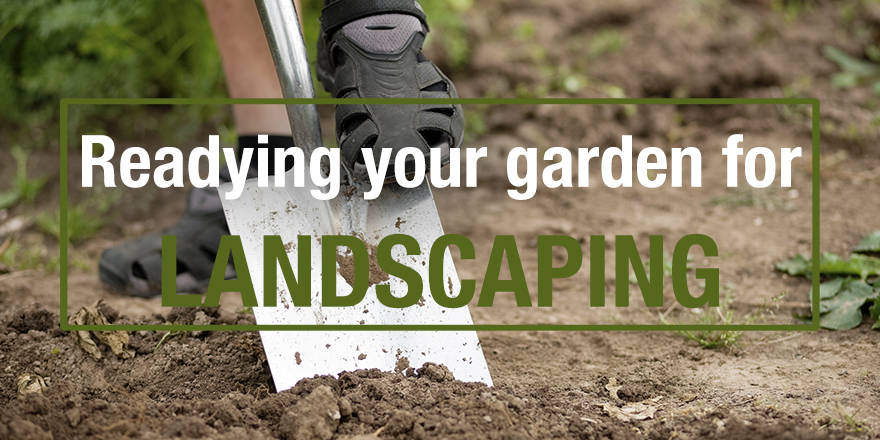Readying your garden for landscaping

Are you about to redo your whole garden? Is getting rid of what you’ve currently got getting in the way of starting your project? This guide will help you through some of the hardest parts of readying your garden for a new look, showing you how to easily get rid of the most space-consuming elements of your average garden.
Removing turf
If you’ve got a good amount of lawn space, this may seem like a huge task. What you should know is that you don’t need to dig deep to remove your grass. Although some of the roots will run reasonably deep, most of the plant is right near the surface. You should be able to remove all your grass just by getting rid of the top inch of soil.

You’ll want to make sure your shovel is sharp before you start. If you need help with this check out Gardening Products Review’s great guide.
- Take your shovel and cut down 2-3 inches in to the earth.
- Get the blade of your shovel horizontal under the grass, then use the heel and handle to force the spade further along underneath the turf.
- Once it’s a couple of blade-lengths under, wiggle your spade side to side to rip up the section of turf you’ve dug.
- Throw your ripped out section of turf in your wheelbarrow
- Repeat until your wheelbarrow is full, deposit in to a HIPPOBAG and repeat until your old lawn is gone.
If you have a large area of turf to remove, it may be easier to use a turf stripping machine. These, however, are not a total shortcut and still require a lot of effort to manoeuvre around your garden.
If you don’t need intend to use the leftover soil in your new garden design, check out our guide on how to get rid of soil.
Taking apart the shed
If your garden is a bit of a state, your shed is likely to be one of the most neglected elements. Dismantling a shed can be challenging if the wood has rotted and the fittings are rusted, but if you’re throwing it out anyway, you don’t need to be too delicate. Get some good strong gloves and follow these steps:
- Tackle the roof first. If your shed has a metal roof this is likely to be secured with simple-to-remove screws, but will be heavy. Whatever material the outer is made of, you’ll want to remove it to gain access to the nails holding the roof decking to the trusses or rafters underneath.
- Removing the roof will make the 4 walls very unstable, so the next step is to take them down. There should be a trim on each corner concealing the nails holding these together. Use a pry bar to remove these, then pull each wall down.
- When each wall is down, you may want to saw them down in size until they will fit in your HIPPOBAG. Once chopped these bits of wood should be laid against the walls of your HIPPOBAG to create a structure and maximise the amount of room you have to get rid of your garden waste.
- A claw hammer is great for helping to remove rusted nails.
Patio removal
For this part of your garden clearance, you’ll need a sledgehammer, a pickaxe and your trusty wheelbarrow.
This is the one part of the project you’ll want to save the goodwill of your friends and family for – going it alone will be tough and work should be split in to demolition and removal tasks.
Lay a sheet over the slab you are demolishing to stop any chunks flying off and damaging your property or self. A plastic sheet works best as you can still see what’s going on beneath. This will also prevent dust becoming a problem while you work.
You may be eager to get on with the smashing and want to get stuck in with your sledgehammer, but going all-out attack won’t get you far and you might wear yourself out pretty quickly. Have one of your helpers lift the corner of your patio, if possible, with a long pry bar. This will make it much easier to demolish the patio as it prevents the impact of your blows being absorbed by the ground below.

